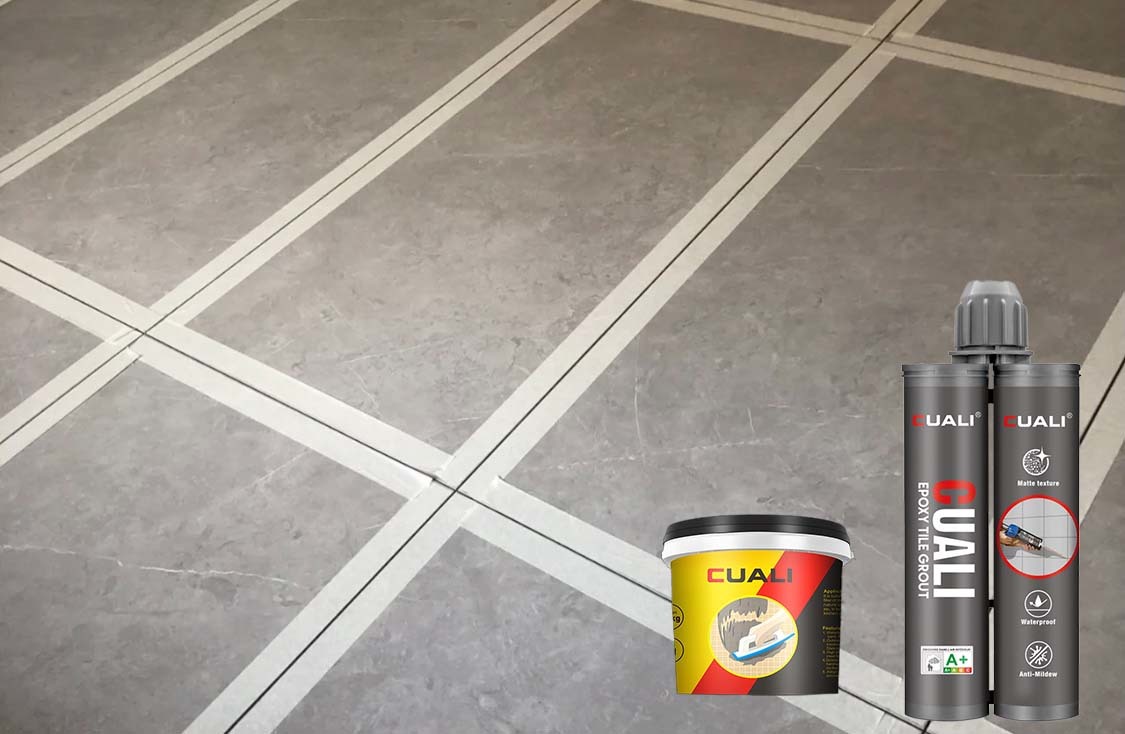
A Crucial Step – How to Choose Grouting Materials
Grouting tiles is a step you can’t afford to ignore, and the first thing to figure out is how to choose the right grouting material. The most expensive option isn’t always the best—choosing based on the area is smarter.
Materials like white cement, grout, tile sealant, ceramic sealant, and  epoxy sanded grout all count as grouting materials. But differences in their composition and application methods mean huge gaps in their final results and costs.
epoxy sanded grout all count as grouting materials. But differences in their composition and application methods mean huge gaps in their final results and costs.
White cement and basic grout are the oldest types of grouting materials. They’re not waterproof or mold-resistant, and once they get dirty, they’re hard to clean.
Tile sealant and ceramic sealant are now mainstream choices. They’re water-resistant, stain-proof, and hard—hardly letting any water seep through. However, tile sealant can’t handle high temperatures; near underfloor heating or kitchen stovetops, it may shrink or sink. Ceramic sealant, on the other hand, only comes in a glossy finish, so it’s only suitable for pairing with glossy tiles.
Epoxy sanded grout is roughly the best all-rounder in terms of performance, but it’s more expensive. Labor costs average around ¥10 per meter (and ¥20 per meter for materials plus labor). Take the well-known imported brand Mapei, for example—a 5kg bucket of epoxy sanded grout costs at least ¥600+.
But even though it’s pricey, epoxy sanded grout isn’t perfect. Let’s break down the key factors:
- Price: Epoxy sanded grout > Ceramic sealant > Tile sealant > Basic grout
- Application difficulty: Epoxy sanded grout > Ceramic sealant/tile sealant > Basic grout
- Waterproof and stain resistance: Ceramic sealant > Tile sealant > Epoxy sanded grout > Basic grout

So, while easy cleaning is important, we also need to consider our budget.
In dry areas—like living rooms, bedrooms, and studies—using good-quality basic grout works perfectly fine. It avoids the problem of mold from water exposure. If you want a matte or seamless look, go for epoxy sanded grout.
In areas with water or oil—such as kitchens, bathrooms, and balconies—ceramic sealant or tile sealant are more suitable.
Summary:
This article explains that choosing grouting materials should depend on the area: basic grout works for dry spaces, tile/ceramic sealants are better for wet or oily areas, and epoxy sanded grout is a high-performance but pricey option. It also compares their costs, difficulty of application, and waterproof/stain-resistant properties.
Time:
2025-08-21
More News
